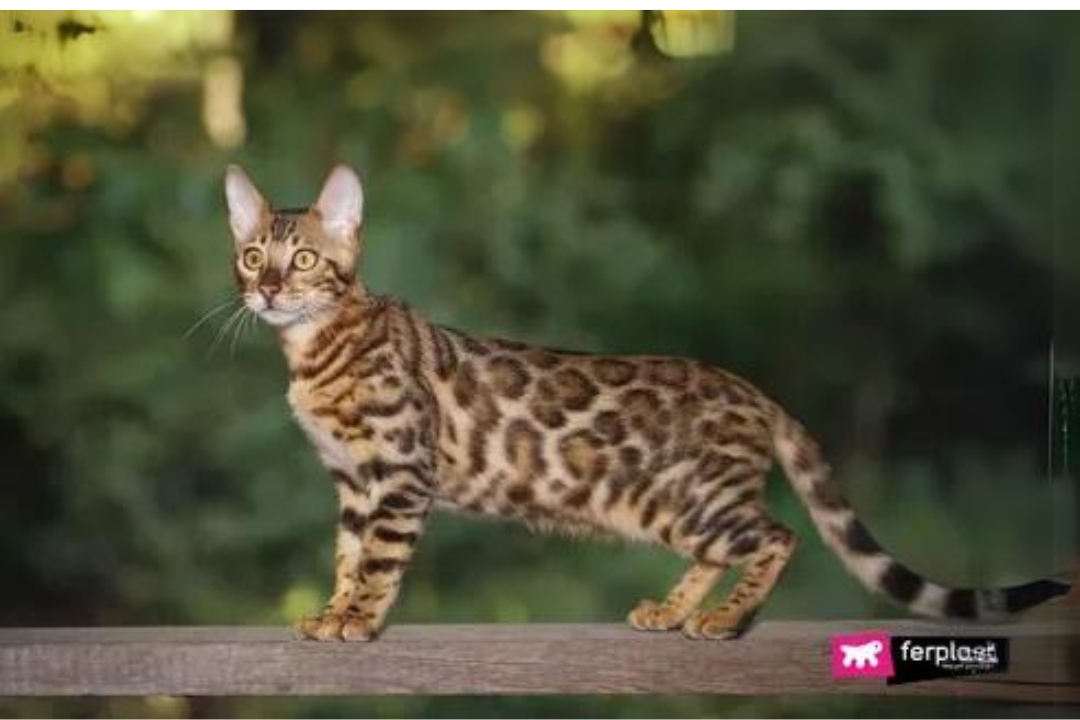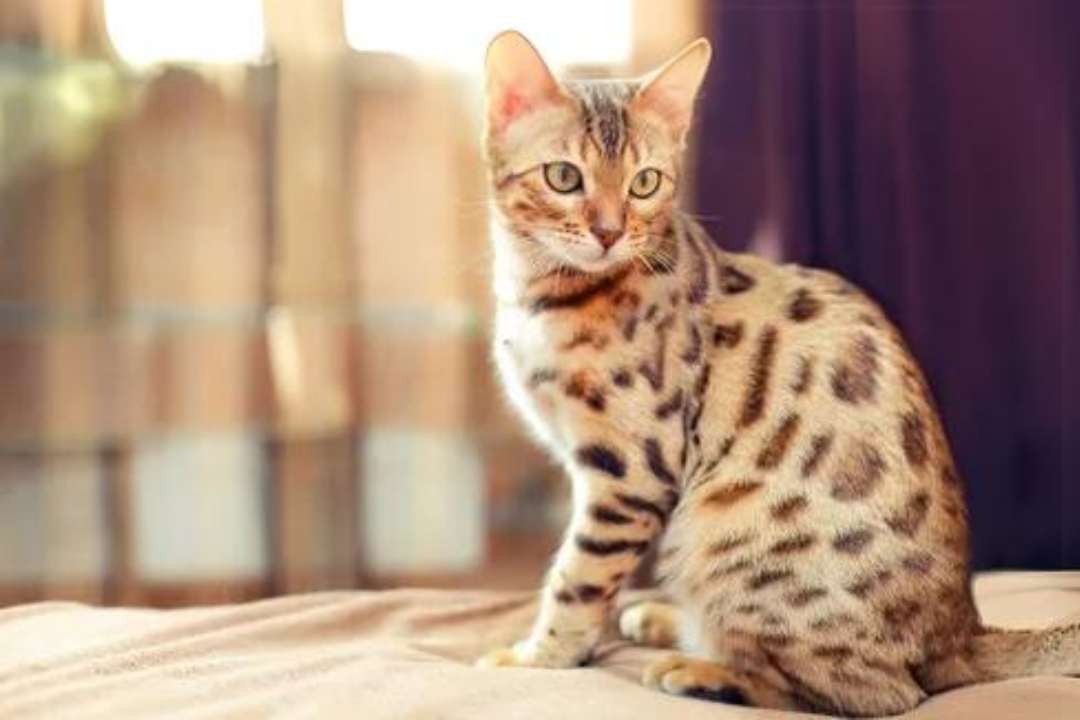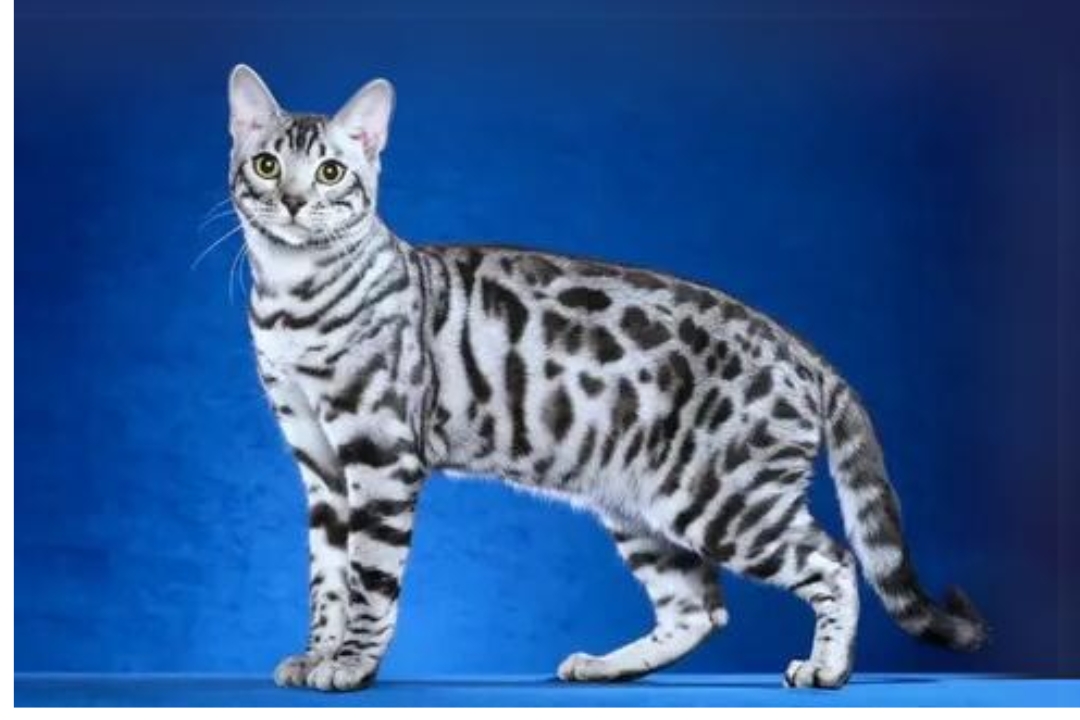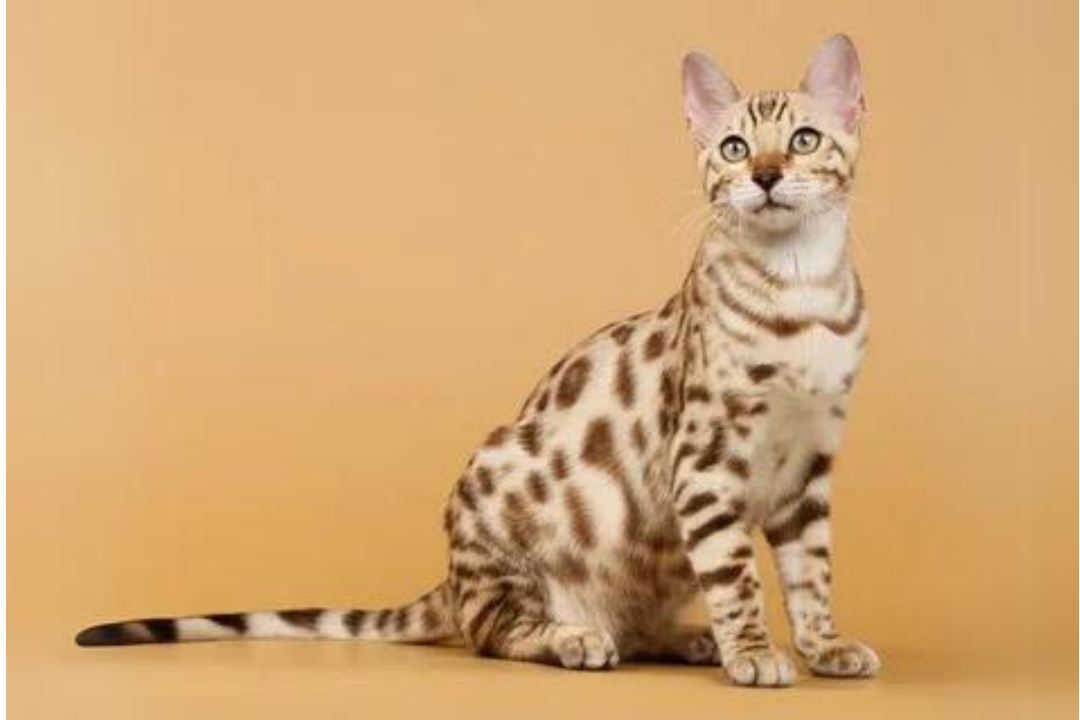The Bengal Cat: A Majestic Blend of Wild and Domestic 04
- The Bengal Cat: A Majestic Blend of Wild and Domestic 04
- History and Origins
- Physical Characteristics
- Temperament and Personality
- Care and Maintenance
- Health Considerations
- Behavior and Intelligence
- Socialization and Interaction
- Living with a Bengal feline
- Distinctive Traits and Fun Facts
- Considerations Before Bringing Home a Bengal
- The Bengal feline: Delving Deeper into Their Unique World
- Genetic Heritage and Breeding
- Understanding Bengal Cat Behavior
- Training and Mental Stimulation
- Health and Lifespan
- Bengal felines in Popular Culture
- Conclusion:
- FAQs About Bengal Cats
History and Origins
The Bengal feline is a somewhat new variety, created in the US in the late twentieth 100 years. The variety began from the crossbreeding of a homegrown feline with the Asian Panther Feline , a little wild cat local to Southeast Asia. The objective was to make a feline with the outlandish appearance of a panther however with the personality of a house feline.
The main fruitful half and half was accomplished by Jean Plant, a raiser in California, during the 1960s. She reared a homegrown feline with an Asian Panther Feline, bringing about a litter of little cats that showed the wild markings of their wild parent. Through cautious and specific reproducing more than a few ages, the Bengal feline was formed into the variety we know today, with an unmistakable spotted or marbled coat and a lively, tender nature.
Physical Characteristics
One of the most striking elements of the Bengal feline is its jacket, which looks like that of a wild panther. The coat is short, thick, and unimaginably delicate, with a novel surface frequently depicted as “plush.” Bengals come in different tones, with the most well-known being brown, snow (which incorporates both lynx point and mink), and silver. The coat example can be either spotted or marbled, with rosettes, like those seen on panthers, being especially valued.
Bengal felines are medium to huge in size, with guys normally gauging somewhere in the range of 10 and 15 pounds and females somewhat more modest. They have a solid, athletic form with long, lean bodies, giving them an exquisite and strong appearance. Their heads are somewhat little contrasted with their bodies, with enormous, almond-molded eyes that can be green, gold, or blue, contingent upon the coat tone.
Temperament and Personality
Bengal cats are known for their lively and perky nature. They are profoundly dynamic and require a lot of physical and mental excitement to remain blissful and solid. Bengals are canny and inquisitive, frequently figuring out how to open entryways, drawers, and even turn on spigots. They appreciate intuitive play, for example, get or bewilder toys, and numerous Bengals are known to cherish water, a quality acquired from their wild predecessors.
Regardless of their wild appearance, Bengal cats are friendly and can serious areas of strength for frame with their human partners. They are social creatures that frequently coexist well with different pets and kids, making them astounding family pets. Notwithstanding, their high energy levels mean they are the most ideal to families where they can get a lot of consideration and excitement.

Care and Maintenance
Really focusing on a Bengal feline is like really focusing on some other homegrown feline, with a couple of extra contemplations because of their high movement levels. Ordinary recess is fundamental to forestall fatigue and guarantee they get sufficient activity. Giving an assortment of toys, scratching posts, and climbing designs can assist with keeping them engaged.
The Bengal’s short coat requires negligible prepping, albeit normal brushing can assist with lessening shedding and keep their jacket in top condition. Like all cats, Bengals need ordinary veterinary consideration, a reasonable eating regimen, and spotless, new water.
Health Considerations
Bengal cats are for the most part solid, however like all varieties, they can be inclined to specific medical problems. A portion of the circumstances that might influence Bengals include:
Moderate Retinal Decay (PRA): A hereditary condition that can prompt visual impairment. Dependable raisers will evaluate for PRA to diminish the gamble of giving it to people in the future.
Patellar Luxation: A condition where the kneecap separates, which can cause torment and weakness. Medical procedure might be expected in extreme cases.
The Bengal feline: More Than Just a Pretty Face
The Bengal feline isn’t just known for its dazzling appearance yet in addition for its dynamic and drawing in character. While many are at first attracted to the variety due to its fascinating look, they before long find that Bengals offer far beyond great looks. Beneath, we plunge further into the different parts of Bengal feline possession, including their way of behaving, insight, and how they contrast from different varieties.
Behavior and Intelligence
Bengal cats are frequently depicted as “canine like” in their way of behaving because of their powerful urge for collaboration and friendship. Dissimilar to some cat varieties that are satisfied with a more singular presence, Bengals blossom with commitment and frequently search out the organization of their human relatives. They are known for pursuing their proprietors around the house, participating in play, and in any event, learning stunts.
Knowledge is one of the trademark qualities of the Bengal cat They are exceptionally teachable and can rapidly figure out how to answer orders, perform deceives, and, surprisingly, stroll on a chain. This knowledge, joined with their interest, implies they can undoubtedly cause problems while perhaps not appropriately engaged. Bengals are issue solvers and can sort out some way to open cupboards, drawers, and entryways, so it’s essential to cat resistant your home to guard them.
Socialization and Interaction
Bengal cats are social animals that partake in the organization of different creatures, including canines and different cats. When appropriately presented, they can areas of strength for shape with their kindred pets and frequently take part in energetic exercises together. In any case, their high energy levels can in some cases be overpowering for additional laid-back creatures, so it’s critical to guarantee that all pets in the family are OK with a functioning sidekick.
As well as being social with different creatures, Bengal cats are likewise known for their vocal nature. They have a large number of vocalizations, from tweets and quavers to howls and murmurs, and they aren’t timid about utilizing them. Bengals will frequently “talk” to their proprietors, telling them when they’re eager, exhausted, or simply need some consideration. This informative way of behaving is another quality that charms them to their proprietors however can be astounding for those used to calmer varieties.
Living with a Bengal feline
Space Prerequisites: Because of their dynamic nature, Bengal cats truly do best in homes where they have a lot of room to meander, climb, and investigate. They are normal climbers, and giving vertical spaces like feline trees or wall-mounted racks can assist with fulfilling their sense to climb. Bengals likewise appreciate outside time, yet it’s prescribed to direct them or give a protected open air nook to guard them.
Recess and Enhancement: Keeping a Bengal feline engaged is vital for their prosperity. They require everyday recess and mental feeling to forestall fatigue, which can prompt disastrous way of behaving. Intelligent toys, puzzle feeders, and normal play meetings with their proprietors are extraordinary ways of keeping them locked in. Numerous Bengal proprietors find that their cats appreciate playing get, a characteristic all the more generally connected with canines.
Diet and Sustenance: Like all cats, Bengals require a reasonable eating regimen that meets their wholesome necessities as commit carnivores. Excellent business feline food, whether dry, wet, or a mix of both, is by and large suggested. Some Bengal proprietors decide on a crude or hand crafted diet, however it’s critical to talk with a veterinarian to guarantee that any eating routine meets the feline’s particular wholesome prerequisites.
Distinctive Traits and Fun Facts
- Water Love: One of the more one of a kind characteristics of the Bengal feline is its affection for water. Numerous Bengals will play in their water bowls, join their proprietors in the shower, or even endeavor to swim. This surprising attribute can be followed back to the Asian Panther Feline, which is known for its proclivity for water.
Coat Varieties: While the exemplary Bengal cover is many times brown with dark or dull earthy colored rosettes, Bengals arrive in various tones and examples. Snow Bengals, for example, have a lighter coat that can go from cream to ivory, frequently with blue or green eyes. Silver Bengals have a cool-conditioned, metallic sheen, and their dark spots stand apart strikingly against the pale foundation.
Dynamic Trackers: Bengals have major areas of strength for a drive, and that implies they love to pursue and “chase” toys or even bugs around the house. This conduct is a leftover of their wild family and makes them fantastic at intuitive games that reenact hunting, like laser pointers or plume wands.
Hypoallergenic Characteristics: While no feline is genuinely hypoallergenic, certain individuals with gentle feline sensitivities find that they have less responses to Bengal cats This might be because of their short, thick coat that sheds not exactly different varieties, decreasing how much allergen-conveying dander in the climate.

Considerations Before Bringing Home a Bengal
While the Bengal cats is an astounding variety, potential proprietors should consider whether they are ready for the responsibility. Bengals require more consideration and excitement than numerous different varieties, and their high energy levels can be trying for the individuals who incline toward an all the more relaxed pet.
In the event that you’re thinking about a Bengal cat, be ready to concentrate on everyday play, give an invigorating climate, and draw in with your cat consistently. Furthermore, it’s critical to work with a legitimate raiser who focuses on the wellbeing and personality of their cats, as Bengals from flippant rearing projects might be more inclined to conduct issues or medical conditions.
The Bengal feline: Delving Deeper into Their Unique World
Bengal cats keep on enamoring cat fans with their mix of wild looks and dynamic characters. To really see the value in this variety, it’s fundamental to investigate further parts of their way of behaving, hereditary qualities, and the obligations engaged with possessing such a functioning and shrewd feline.
Genetic Heritage and Breeding
The Bengal cats particular appearance isn’t simply a consequence of cautious reproducing however a demonstration of its wild family. The variety’s genealogy follows back to the Asian Panther Feline (ALC), a little wild cat animal types local to Asia. The ALC is known for its striking spotted coat, which is quite possibly of the most outwardly noticeable component acquired by the Bengal feline. This wild parentage impacts the Bengal’s appearance as well as its way of behaving and qualities.
Reproducing Projects: To keep up with the Bengal cat’s positive qualities while guaranteeing a steady and friendly demeanor, raisers have worked over ages to refine the variety. Early Bengal ages, known as F1 (original) and F2 (second era), frequently show all the more wild way of behaving because of their nearer hereditary connections to the ALC. These early ages are normally more saved, less friendly, and may require extraordinary consideration. As the ages progress (F3, F4, and then some), the cats become more tamed, showing the adoring and fun loving nature for which Bengals are known today.
Moral Reproducing: It’s vital to pick a raiser who focuses on the wellbeing and prosperity of their cats. Moral raisers center around diminishing hereditary medical problems, giving legitimate socialization since early on, and guaranteeing that their felines are put in homes fit to the variety’s high energy and intelligent nature. The Bengal Feline Club and other variety explicit associations frequently have assets and raiser indexes for planned proprietors to counsel.
Understanding Bengal Cat Behavior
Bengals are known for their high energy levels, which can be both a delight and a test for proprietors. Understanding their way of behaving is vital to giving them a satisfying life.
Hunting Senses: Because of their wild heritage, Bengals have major areas of strength for a drive. They are normal trackers, and, surprisingly, indoor Bengals will display hunting ways of behaving like following, jumping, and hauling around toys as though they were prey. Giving a lot of intuitive toys and taking part in play that reproduces hunting can fulfill this nature and forestall conduct issues.
Interest and Investigation: Bengals are incredibly inquisitive. They love to investigate their current circumstance and frequently search out new undertakings. This interest can prompt some devilish way of behaving, like moving into cabinets, pushing over items, or in any event, attempting to get away from outside. To channel this interest decidedly, proprietors can set up advancing conditions with puzzle toys, feline trees, and, surprisingly, safe open air walled in areas.
Socialization and Friendship: Bengals are exceptionally friendly cats that frequently need friendship. They will quite often serious areas of strength for frame with their proprietors and appreciate being associated with everyday exercises. While they can be autonomous, they additionally expect association to forestall fatigue. Bengals truly do well in homes where somebody is around much of the time or where they have one more pet to stay with them. In any case, in light of their dynamic nature, they may not be the best fit for more established, more stationary felines or canines.
Training and Mental Stimulation
Clicker Preparing: Bengals’ knowledge makes them profoundly teachable. Clicker preparing is a well known strategy used to show Bengals different orders and deceives. With persistence and consistency, Bengals can figure out how to sit, remain, bring, and even perform more perplexing errands. Instructional courses give mental excitement and assist with building a more grounded connection between the feline and proprietor.
Puzzle Toys and Enhancement: Mental feeling is similarly essentially as significant as actual work for Bengal felines. Puzzle toys that challenge their critical thinking skills can keep them connected with for quite a long time. Food-administering toys are likewise an incredible method for invigorating their psyches and fulfill their regular hunting senses.
Rope Preparing: Not at all like many feline varieties, Bengals can be prepared to stroll on a chain. This permits them to investigate the outside while fulfilling their interest and need for experience securely. Rope preparing ought to start early and be done bit by bit, utilizing encouraging feedback to guarantee the experience is agreeable for the feline.

Health and Lifespan
Bengal cats are for the most part solid, with a life expectancy going from 12 to 16 years, and some of the time longer with legitimate consideration. In any case, similar to all varieties, they are inclined to explicit medical problems.
Normal Medical problems:
Hypertrophic Cardiomyopathy (HCM): As referenced prior, HCM is a heart condition that influences many feline varieties, including Bengals. Standard heart screenings can assist with distinguishing this condition early.
Moderate Retinal Decay (PRA): This hereditary condition influences the eyes and can prompt visual deficiency. Capable reproducers test for PRA to decrease the probability of this condition in their cats.
Joint Issues: Bengals, because of their high action levels, may encounter joint issues, like hip dysplasia. Keeping your Bengal at a sound weight and giving joint enhancements in the event that essential can assist with dealing with this gamble.
Diet and Sustenance: A fair eating routine is vital for keeping a Bengal’s wellbeing. Because of their dynamic way of life, Bengals require an eating regimen wealthy in protein to help muscle improvement and energy levels. Excellent business feline food is for the most part adequate, however a few proprietors like to take care of a crude or home-cooked diet. In the case of considering elective eating regimens, it’s fundamental to talk with a veterinarian or a catlike nutritionist to guarantee that the feline’s healthful requirements are met.
Bengal felines in Popular Culture
Bengal felines have transformed mainstream society, frequently being highlighted in notices, network shows, and web-based entertainment because of their striking appearance and drawing in characters. Their wild looks have likewise pursued them a famous decision for extraordinary pet fans. Notwithstanding, it’s memorable critical that Bengals are something other than a lovely face — they are living creatures with explicit necessities that should be met to guarantee their prosperity.
Web-based Entertainment and Local area: The Bengal feline local area is flourishing on the web, with numerous proprietors sharing their encounters, tips, and photographs of their felines on stages like Instagram, YouTube, and Facebook. This web-based presence has helped bring issues to light of the variety and associate Bengal proprietors around the world. Drawing in with these networks can offer important help and bits of knowledge for both new and experienced Bengal cats proprietors.
Conclusion:
Possessing a Bengal cats is a one of a kind and remunerating experience, yet it’s not a great fit for everybody. Their high energy levels, knowledge, and social nature require a devoted and drew in proprietor who can give the important excitement and care. For the individuals who are capable, Bengals offer an unrivaled bond, loaded up with adoration, experience, and incalculable important minutes.

From their wild lineage to their cutting edge job as cherished partners, Bengal cats epitomize an intriguing mix of the outlandish and the recognizable. They are a demonstration of the excellence and intricacy of cat hereditary qualities and an indication of the delights of imparting our lives to such exceptional creatures.
FAQs About Bengal Cats
- What is a Bengal cat?
A Bengal cat is a domestic cat breed that was developed by crossing domestic cats with the Asian Leopard Cat (ALC), a small wild cat species native to Asia. Bengals are known for their wild appearance, which resembles that of a leopard, and their playful, energetic personalities.
- Are Bengal cats good pets?
Yes, Bengal cats can make excellent pets for the right owner. They are affectionate, social, and highly intelligent. However, they require more attention and stimulation than many other cat breeds, so they are best suited to active households where they can receive plenty of playtime and interaction.
- Do Bengal cats get along with other pets?
Bengal feline are generally social and can get along well with other pets, including dogs and other cats, especially if they are introduced properly. However, their high energy levels and playful nature may be overwhelming for more laid-back animals.
- Are Bengal cats hypoallergenic?
While no cat is truly hypoallergenic, some people with mild cat allergies may find that they have fewer reactions to Bengal feline. This could be due to their short, dense coat, which tends to shed less than other breeds, reducing the amount of allergen-carrying dander in the environment.
- How much do Bengal cats cost?
The cost of a Bengal feline can vary widely depending on factors such as the breeder, the cat’s pedigree, and whether the cat is intended for breeding or as a pet. Generally, pet-quality Bengal kittens can range from $1,000 to $3,000, while show-quality or breeding Bengals can cost significantly more.
- What kind of personality do Bengal cats have?
Bengal cats are known for their lively, curious, and playful personalities. They are highly active and enjoy exploring, playing with toys, and interacting with their owners. They are also intelligent and can be trained to do tricks, play fetch, and even walk on a leash.
- How much exercise do Bengal cats need?
Bengal feline are very energetic and need plenty of exercise to stay happy and healthy. Daily play sessions, interactive toys, and climbing structures like cat trees are essential for keeping them entertained. Without sufficient exercise and stimulation, Bengals can become bored and may develop behavioral issues.
- Do Bengal cats require special care?
Bengal feline don’t require special care beyond what is typical for domestic cats, but they do need more attention and mental stimulation due to their high energy levels. Regular play, a balanced diet, and routine veterinary care are essential. Additionally, because of their intelligence and curiosity, it’s important to cat-proof your home to prevent them from getting into trouble.
- Do Bengal cats like water?
Yes, many Bengal cats enjoy playing with water, a trait inherited from their wild ancestors, the Asian Leopard Cats. Some Bengals may even enjoy swimming or joining their owners in the shower. However, this can vary from cat to cat.
- How long do Bengal feline live?
Bengal cats typically have a lifespan of 12 to 16 years, though some can live longer with proper care. Ensuring they have a healthy diet, regular veterinary check-ups, and plenty of physical and mental stimulation can contribute to a long and healthy life.
